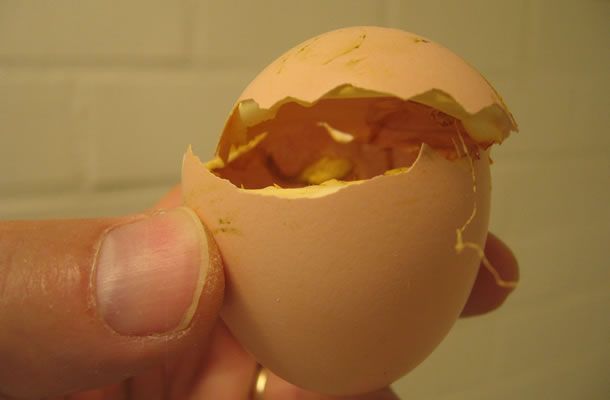Empty shells - a valuable source of information
Tags: Hatchery management | Whitepaper
, 27 August 2010

On hatch day, unhatched eggs, dead and culled chicks and empty shells are inevitably produced as hatchery waste. It is generally accepted that unhatched eggs and dead or culled chicks can be used to evaluate the incubation process, to help determine where improvements can be made. Empty egg shells are usually overlooked. But these also form a valuable source of information for the hatchery.
Empty shells can provide additional information about the pulling time of the chicks and their hatching conditions. When empty shells are crushed in the hand, the dryness of the shell membranes can be judged. Pulling time and hatching conditions are good if the membranes crumble in your fist without falling apart into small pieces. When the membranes completely stay together and do not crumble they are still too moist, indicating that the chicks were pulled too early. In this scenario, we expect also to see some partially wet chicks - or even externally pipped chicks still alive. The membranes falling apart into small pieces indicates that pulling time was too late or that relative humidity may have been too low during hatching, possibly due to excessive ventilation. If pulling time was too late, a lot of meconium (the greenish droppings produced by the chicks) will also be observed on the empty shells.
The height of pipping is an indication of weight loss during incubation. If weight loss was insufficient, the air cell remains small and the chicks are forced to pip high. Some chicks will not be able to pip at all and will drown inside the egg. The correct height for pipping is roughly at half, or just above half, the height of the egg (see photo). Exposed to ideal hatching conditions, the chicks will pip the rest of the shell neatly in a circular manner. Rough or incomplete pipping is an indication of sub-optimal hatching conditions.
At days 11 - 12 of incubation, the chorio-allantoic membrane reaches the sharp end of the egg. If the albumen sac is too large due to insufficient weight loss, this membrane cannot reach the sharp end and will not be closed. Insufficent weight loss is typically caused either by too low a temperature or over high humidity. Observe whether or not the chorio-allantoic membrane is closed by looking inside the bottom part of the empty shells. If there was overheating during the last days in the setter or in the hatcher, excessively thick and clearly visible blood vessels will be observed.
Advice
- Judge the accuracy of pulling time and hatching conditions by crumbling empty shells in your fist and by checking the amount of meconium on the egg shells.
- Check the height and manner of pipping, to judge whether weight loss during incubation was sufficient.
- Check the inside of the empty shells for signs of insufficient weight loss during the first half of incubation (blood vessels not reaching until sharp end of egg).
- Observe the inside of the empty shells for signs of overheating (excessively large and clearly visible blood vessels).
- Use information obtained from assessing the empty shells in conjunction with other observations, to avoid hasty or incorrect conclusions.
Written by Gerd de Lange
Senior Poultry Specialist
I welcome your feedback on this article - and if you require any additional information, please don't hesitate to contact me.